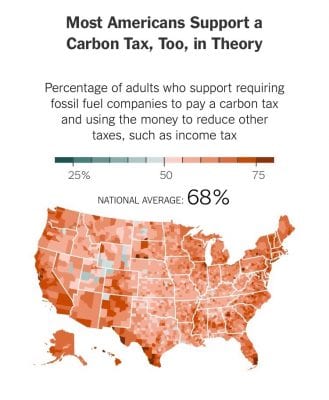Throughout this term, we have learned how to apply mathematics with sustainability. This course has taught us how to make predictions, understand variability in graphs and conversions. Week 6, we learned about different kinds of reusable energy. This is where I will be expanding my thoughts and global engagement. According to New York Times writer, Nadja Popovich, the Yale Program on Climate Change Communication pulled research from the American population on where they stand on reusable energy. One surprising statistic found is that in almost every county of the United States, Americans support they aspect of having at least 20% of their energy as reusable (that being wind, solar, hydro). In addition, 68% of Americans argue that there needs to be an increase in carbon taxes for drilling companies. Finally, because reusable energy is a growing industry, 85% Americans said they would invest funding on research for reusable energy.
For week 6, we were asked to describe what the reusable energy source was. This week, after reading this article should have a positive shift in how people view reusable energy. Although we already have 2 dozens states implementing a policy requiring some time of implementation of reusable energy, many of them fall short of reaching the goal. We need to take this data and spread awareness, communicate with others about the importance of reusable energy by increasing research and policies.








